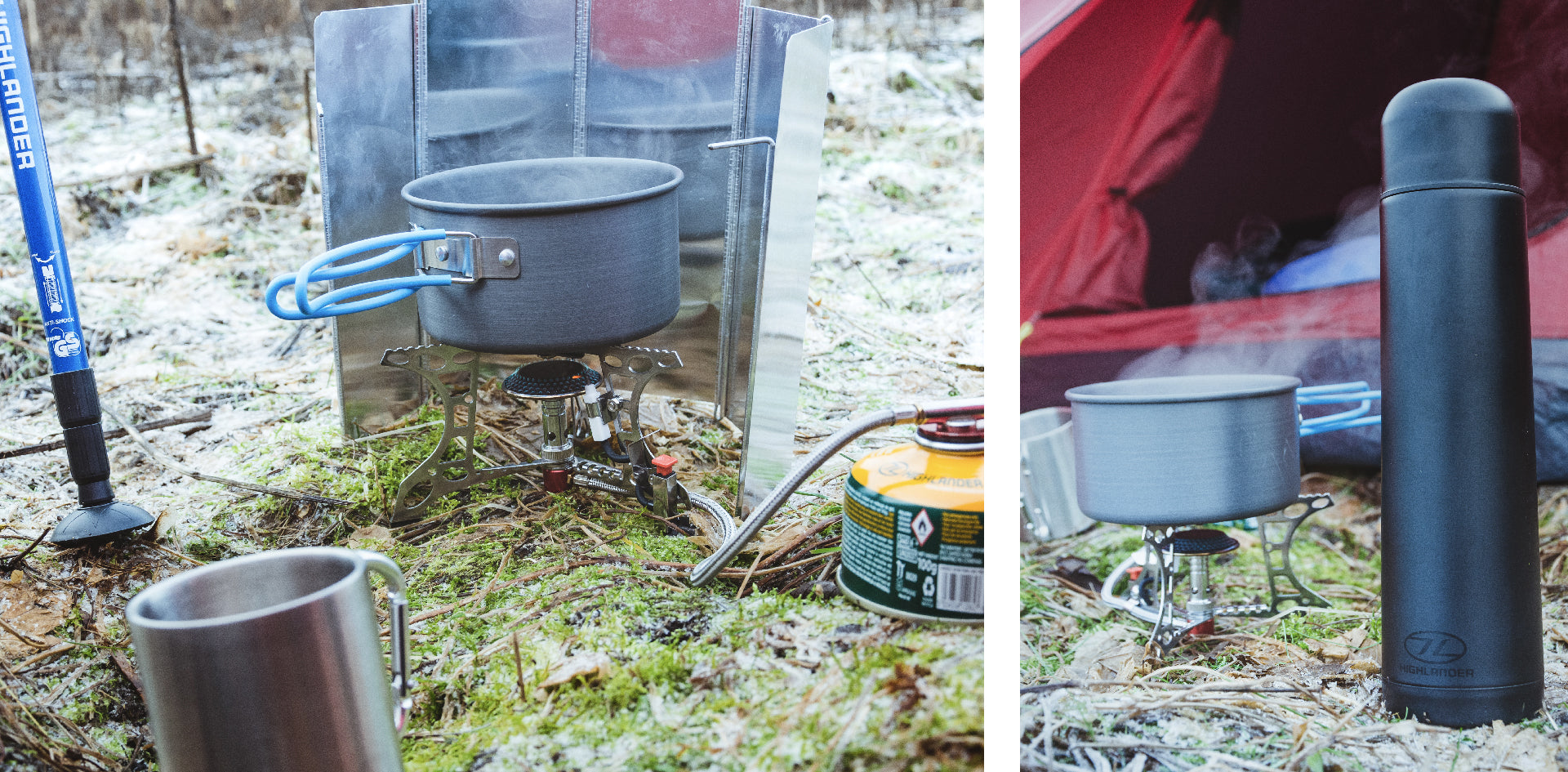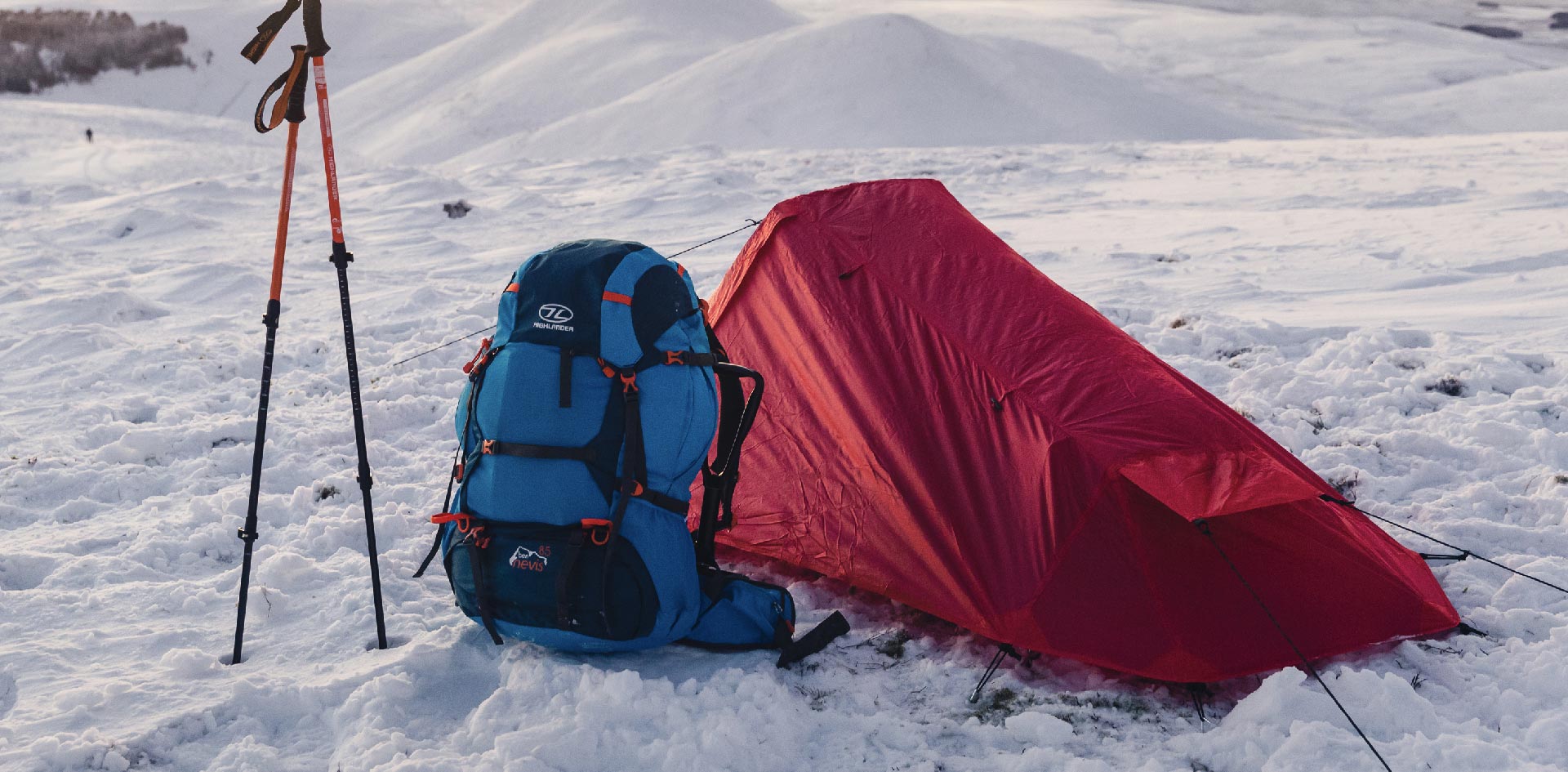1. Pitch up before it gets dark
Stumbling around putting up a tent or setting up a bivvy in the dark is tricky and is much easier in the daylight.
2. Select the right spot
Pitch your tent or bivvy bag out of the wind if possible. Use natural barriers such a rocks, the terrain and trees (don't pitch directly under a tree in the snow as branches are liable to break due to the weight). In the snow, create a space with a shovel and use the snow to create a barrier.
3. Eat plenty
The body needs fuel to generate heat, so eat a hot meal before sleeping which will help you stay warm whilst you sleep. Having a midnight feast of high-calorie snacks will boost your body core temperature. W
4. Add layers
As soon as the temperature drops in the evening add something to keep you warm. Don’t wait until you’re already cold to add a layer. Wear a hat in bed. If you just can’t seem to warm up despite trying everything else, wearing a hat will help retain body heat.
5. Go to bed warm
Don’t go to bed cold, sleeping bags are hard to warm up if your body temperature is already low. Do some star jumps or walk around to warm up before getting in.
6. Get off the cold floor
Use a good sleeping mat / inflated sleeping mat to provide extra insulation. (The Explorer, Trek Lite and Trail are great choices) Conduction occurs at 68°F (20°C) and is responsible for the loss of body heat from sleeping on the cold ground.

7. Sleeping bag
Use a four season sleeping bag (Serenity 450 or Echo 400) and for improved warmth include a sleeping bag liner.
8. Keep you boots in the tent
If you leave them out, in the morning they will be frozen blocks of ice. Keep them in the tent so they will stay dry and warm.
9. Condensation
Don’t put your head into your sleeping bag or breathe into your bag to try and warm it up. All you’ll do is create condensation which can result in a damp sleeping bag and low body temperature. The same goes for if you start to sweat, take some layers off to cool down.
10. Ventilate the tent
It might feel a little cold ventilating the tent overnight but make sure your tent is well ventilated throughout the night. This reduces the risk of condensation.
11. Treat yourself
Taking food supplies and treats can lift the spirits and will make the camping more comfortable. A stove, wind shield, water and plenty of food to last the duration of the camp are essential.

12. Other tips
• Fill a flask before bed so you have an emergency hot drink in the night.
• On windy nights, build up the snow around the edges of the tent to keep the wind from getting under the flysheet.
• Use your axe, trekking poles or sticks as additional pegs.
Check out our Highlander Winter Essentials guide for some great kit to take with you on the hills to keep you warm, comfortable and safe.











